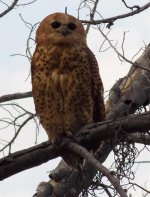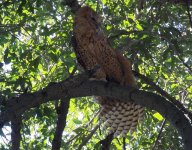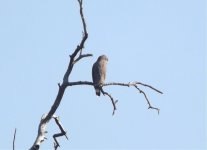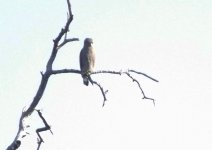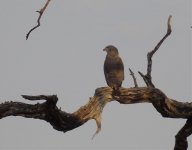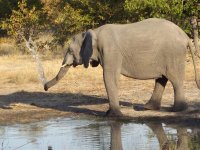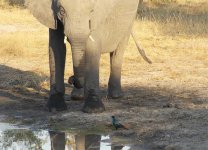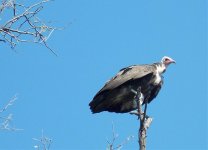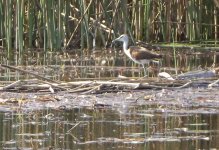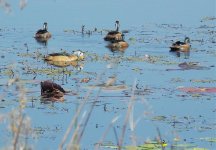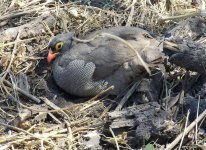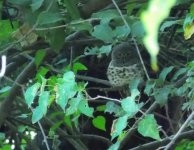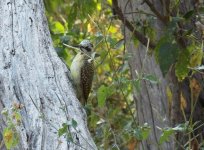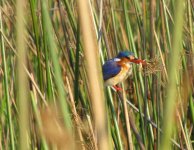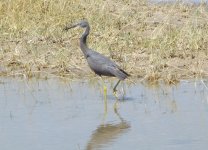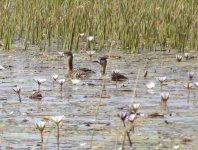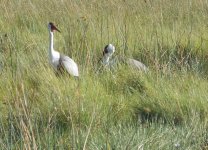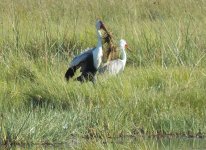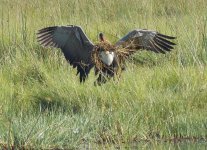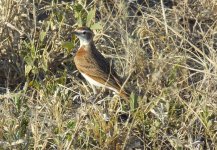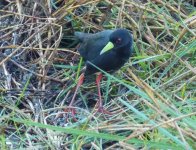Dave Kennedy
Well-known member
Victoria Falls, Xigera and Savuti
Right, then, here's a couple of Delta specials from Xigera. The first, the iconic Pel's Fishing Owl, was a complete charmer. This amazingly laid-back owl used to hang about right next to the jetty at Xigera Lodge, unfussed by the comings and goings of assorted tourists. Sadly, most of the tourists, thanks to endless TV shows featuring the words Death, Killer, Predator etc in their titles, were unaware of, and frankly uninterested in, the significance of this Delta special, seeking only the fanged, tusked and hairy. So sad....they miss so much of what is going on on the bush.
Bird number two is actually two birds, the first two pics being one sighting, and the third pic, where the bird has its back to the camera, another. What made these sightings special was the fact that I've been trying to see Western Banded Snake-eagles for years, and now two come along at once. But they were very welcome. Apologies for the picture quality - they were at the very limit of our telephoto capabilities from a bobbing boat.
Best wishes,
Dave
Right, then, here's a couple of Delta specials from Xigera. The first, the iconic Pel's Fishing Owl, was a complete charmer. This amazingly laid-back owl used to hang about right next to the jetty at Xigera Lodge, unfussed by the comings and goings of assorted tourists. Sadly, most of the tourists, thanks to endless TV shows featuring the words Death, Killer, Predator etc in their titles, were unaware of, and frankly uninterested in, the significance of this Delta special, seeking only the fanged, tusked and hairy. So sad....they miss so much of what is going on on the bush.
Bird number two is actually two birds, the first two pics being one sighting, and the third pic, where the bird has its back to the camera, another. What made these sightings special was the fact that I've been trying to see Western Banded Snake-eagles for years, and now two come along at once. But they were very welcome. Apologies for the picture quality - they were at the very limit of our telephoto capabilities from a bobbing boat.
Best wishes,
Dave




